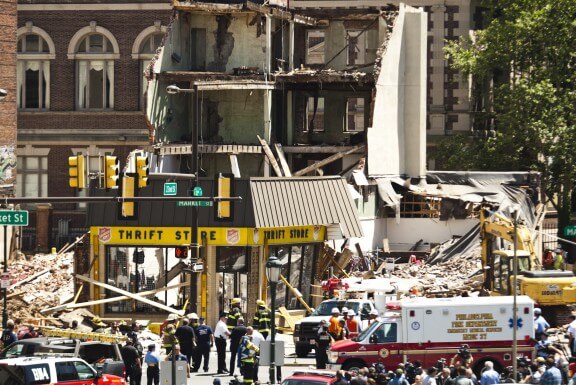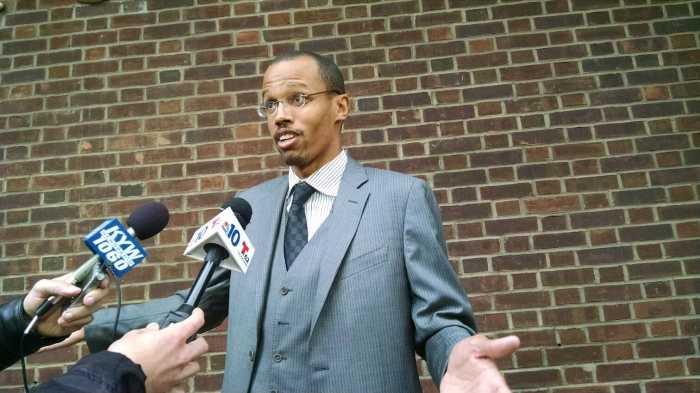Lawyers in the trial of a contractor facing murder in a June 2013 building collapse sparred over how much he knew about a piece of heavy equipment that was on the site.
The contractor, Griffin Campbell, 51, was on the stand for a second day on Thursday as he told jurors that an equipment operator wasn’t supposed to be working near an unsupported four-story wall that toppled onto a neighboring Salvation Army thrift store, killing six people. Prosecutors say that vibrations from the heavy excavator caused the wall to topple over in a catastrophe that also injured 13 people.
Campbell said that on the morning of the June 5 collapse, equipment operator Sean Benshop, who has pleaded guilty in the case, called him up looking for work.
RELATED:Contractor in building collapse takes stand
Campbell agreed, and told Benschop to load some metal in a dumpster. But when the equipment operator showed up, he discovered that they needed diesel fuel. Campbell went to get it while Benshop kept working. When he returned, Campbell said, he found the owner of the buildings, Richard Basciano on the site with his wife — apparently there to check progress. Campbell stopped to talk with the developer, who he said he’d never met. According to prosecutors, Campbell had pursued a demolition strategy that removed interior beams from the four-story building in an effort to increase their salvage value.
That method, however, left the wall standing over the retail store below. Ideally, Campbell wanted to push the bricks into the construction site, but neither he, nor Basciano could could get permission from the Salvation Army to work from their roof. “I told him I was going to get on the roof, at night, with a skeleton crew, to knock the wall down,” Cambell said.
When the building collapsed, Campbell said he was talking to the the couple when he saw a look of horror on Basciano’s wife’s face.
RELATED:Banned: two ingay bash case agree not to set foot in Center City He turned around to see the collapse.
“We ran up on the pile to see who I could help,” Campbell said.
Prosecutors spent much of the afternoon sparring with Campbell.
Campbell has tried to portray himself as too inexperienced as a contractor to truly be responsible for the work at the site. He says he has worked under the direction of the project’s architect, Plato Marinakos. The Market Street project was the largest Campbell had ever handled, and he had only started in the demolition business a year before.
But some of his explanations of the work at the site gave a window into a fairly complex technical understanding of the job.
That prompted prosecutor Edward Cameron to challenge Campbell’s claims.
“It sounds to me like you know a lot about demolition, sir,” Cameron said.
Contractor, prosecutors spar over excavator

Charles Mostoller


























